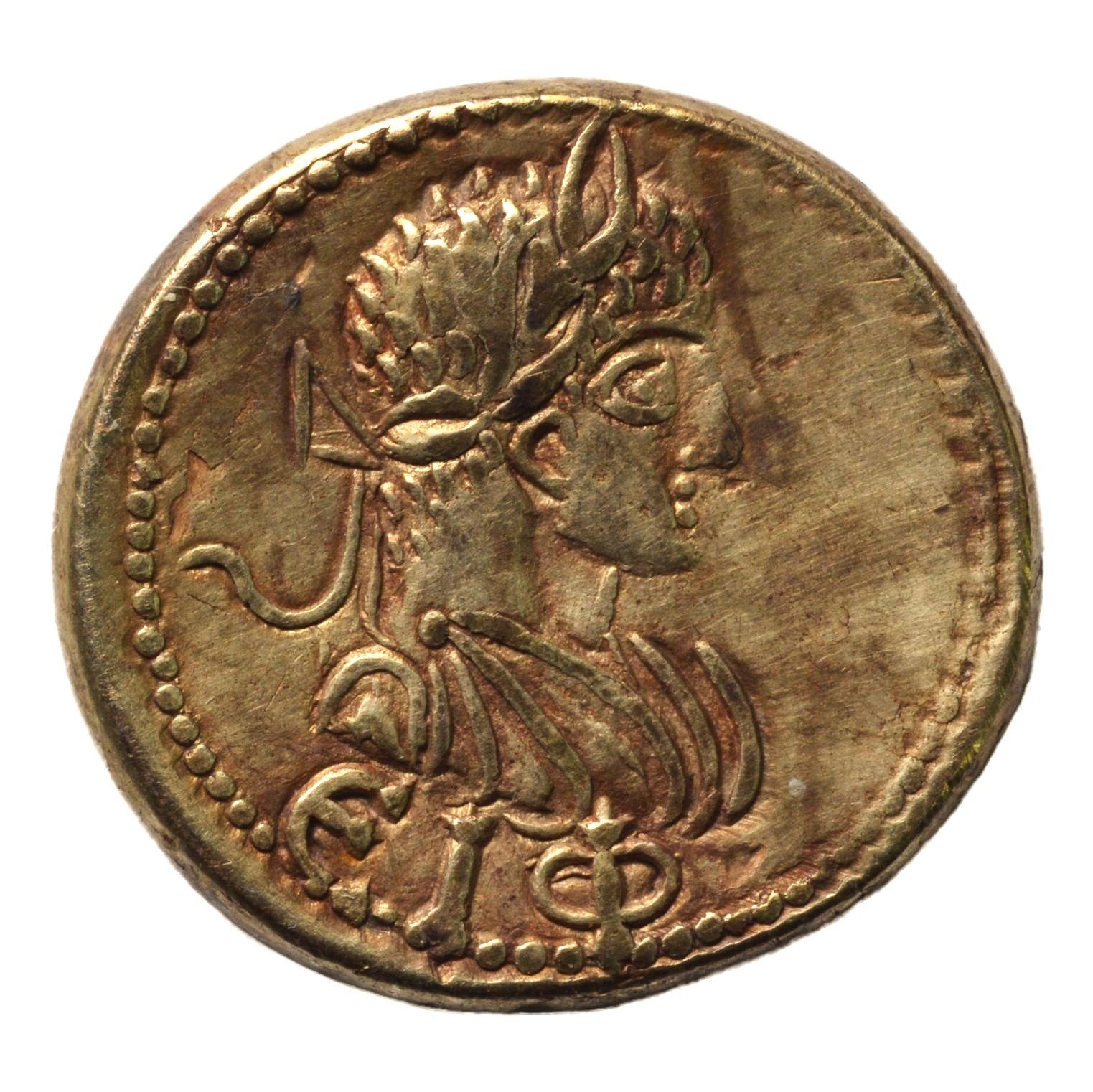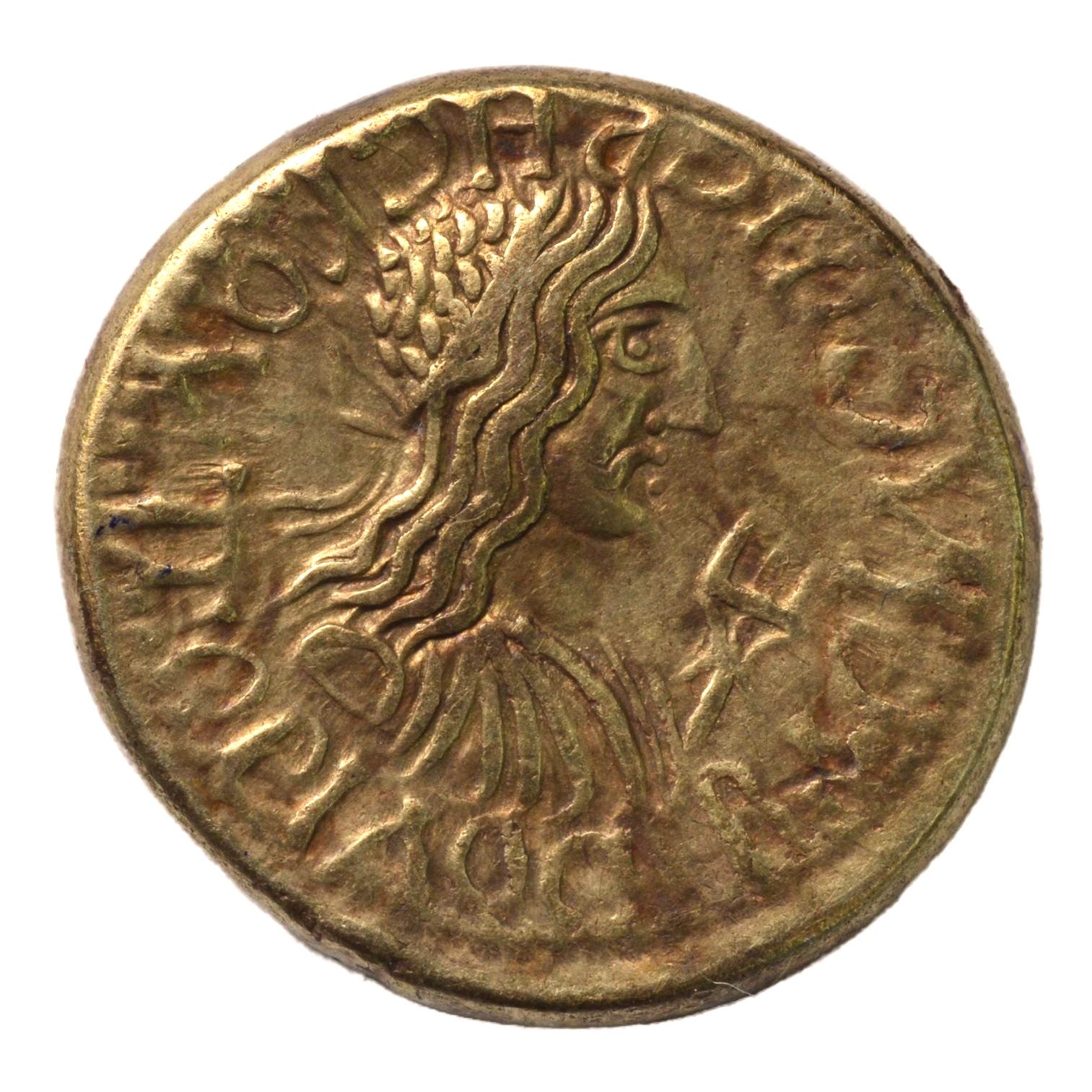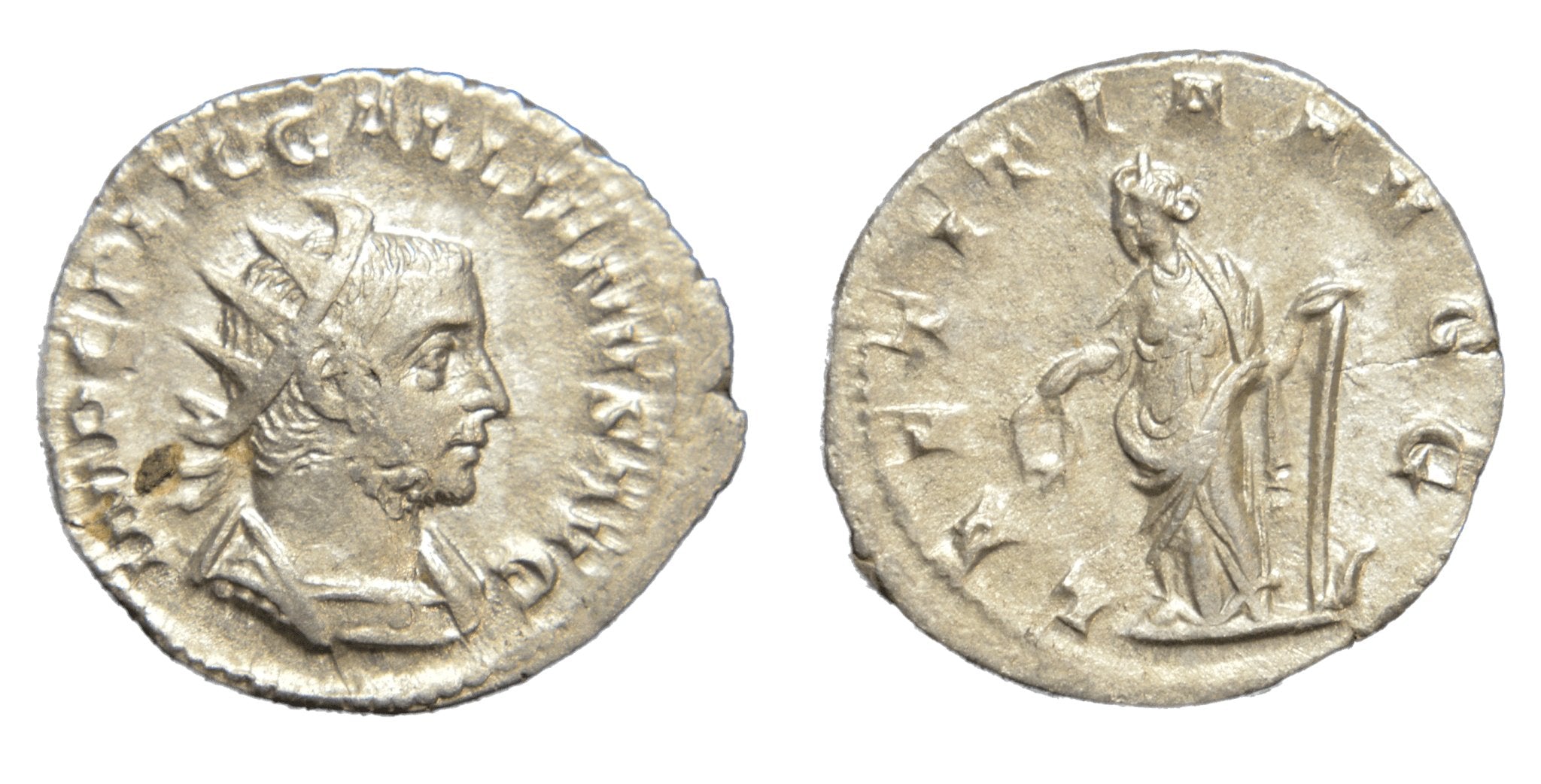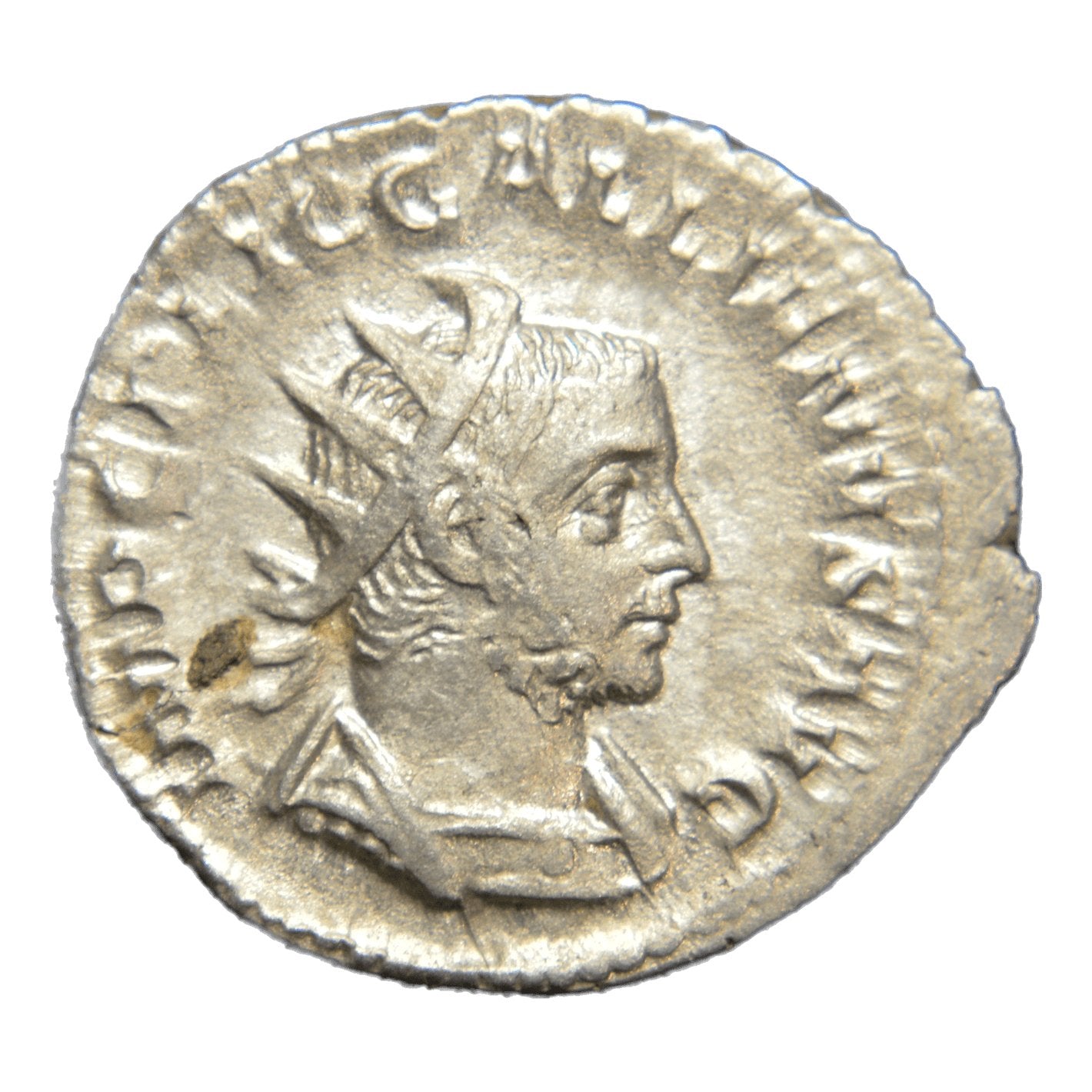In the realm of ancient coins, the classical numismatist traditionally refers to the side of the coin that was struck with the hammer as the "reverse." In the case of the oldest coins, this side can be easily recognized because it featured a simple punch mark or later, a design within an incuse formed by the punch.
The mobile or reverse die would typically experience more wear and tear compared to the obverse die, which remained fixed in the anvil. Consequently, the more significant design was usually reserved for the obverse. In the context of Roman imperial coins, the most crucial design element was undoubtedly the portrait of the emperor, hence the prevalent acceptance of the "heads" side as the obverse in modern numismatics.
Reverses often carry intriguing references to contemporary events. They may depict significant statues, the ruler's favored deity, a dedication to a deity for provided assistance, or an appeal to a deity for support. In the case of Roman Republican moneyers, reverses frequently make references to their ancestral origins. At times, reverses express political objectives or aspirations. They can be commemorative or serve as proclamations. Some reverses feature dates or regnal years, allowing the coins to be precisely dated and associated with the events that influenced the selection of the design motifs.

FELICITAS AVGG
The reverse side of Roman coins played a significant role in conveying messages, promoting propaganda, and disseminating news throughout the vast Roman Empire. These coin designs were carefully crafted to communicate various themes, including religious beliefs, political agendas, and imperial achievements.
One common feature found on Roman coins was the depiction of gods and goddesses. The Romans believed that their prosperity and success were closely tied to divine favor, so the representation of deities on coins symbolized their protection and endorsement of the empire. Gods like Jupiter, Mars, and Hercules were frequently featured, emphasizing the martial strength, power, and glory of Rome. Similarly, goddesses such as Minerva, Victoria, and Pax were shown, signifying wisdom, victory, and peace, respectively.
The reverse designs of Roman coins also served as a tool for propaganda. Rulers often used coins as a medium to promote their political agenda and solidify their authority. They portrayed themselves in heroic or godlike forms, highlighting their virtues and accomplishments. These images aimed to enhance their legitimacy, assert their leadership, and foster loyalty among the population.
Furthermore, Roman coins were employed as a means to distribute news and communicate important events throughout the empire. Victories in battles, the birth of an heir, or the announcement of significant reforms were often celebrated on coinage. This ensured that important information reached every corner of the vast empire, including regions far from the capital.
In summary, the reverse side of Roman coins functioned as a powerful communication tool. Through the depiction of gods and goddesses, propaganda, and the dissemination of news, these coin designs reinforced religious beliefs, conveyed political messages, and ensured a unified sense of identity across the diverse Roman Empire.
There were several common reverse types that appeared on Roman coins throughout different periods of the empire. Here are some of the most prevalent ones:
-
Personifications: One of the most common reverse types featured personifications of abstract concepts or virtues. These could include representations of Victory (Victoria), Peace (Pax), Justice (Justitia), Fortune (Fortuna), or the personification of the city of Rome (Roma). These personifications served to embody and celebrate the values and ideals of the Roman state.
-
Deities: Roman coins frequently depicted various gods and goddesses on their reverse sides. Jupiter (Jove), the king of the gods, was a popular choice, along with other Olympian gods such as Mars (the god of war), Hercules (associated with strength and heroism), Apollo (associated with the sun and arts), and Minerva (goddess of wisdom and warfare). The choice of deities often aligned with the ruler's religious beliefs and political aspirations.
-
Military Themes: Given the importance of military might in Roman society, military-themed reverses were quite common. These could include depictions of soldiers in battle, emperors in military attire, or military standards and weaponry. Such designs aimed to convey the power, strength, and success of the Roman army and its leaders. Examples : Gordian in Military Attire, Fallen horseman, Camp gate and more.
-
Commemorative Coins: Emperors would often issue coins to commemorate specific events or achievements. For example, significant victories, the construction of public buildings, imperial anniversaries, or the birth of an heir could be celebrated on coinage. These commemorative reverses served as a way to document and promote the ruler's accomplishments and to spread the news throughout the empire.
-
Allegorical Figures: Roman coins also featured allegorical figures that represented various provinces, cities, or regions within the empire. These figures were often depicted in a distinctive manner, with specific attributes or symbols associated with their respective regions. This helped to reinforce a sense of unity and identity within the diverse territories of the Roman Empire.
- Abudantia: Depicting a female figure holding a cornucopia or pouring from it, symbolizing abundance.
- Aequitas: Representing equity, with a female figure holding a scale, a scepter, or a cornucopia.
- Aeternitas: Signifying eternity and stability, featuring a male or female figure carrying a sphere, a torch, a scepter, and a phoenix or wearing the heads of the sun and the moon.
- Annona: Featuring a female figure wearing ears of wheat and holding a cornucopia, symbolizing the annona or grain supply.
- Bonvs Eventvs: Depicting a naked figure carrying a cornucopia and a sheaf of ears in one hand, and a cup of sacrifice in the other, pouring it on an alight altar, representing good fortune.
- Caritas: Showing two hands joined together, representing unity and love.
- Clementia: Symbolizing clemency, with a female figure usually leaning on a column and holding a branch and a scepter.
- Concordia: Representing harmony and concord, featuring a seated female figure holding a scepter and a cup of plenty, or two standards or hands joined together.
- Constantia: Signifying constancy and perseverance, depicting a male figure with a raised right hand, often holding a spear and wearing a helmet.
- Fecvnditas: Depicting a female figure with children at her side or in her hands, holding a scepter, symbolizing fertility.
- Felicitas: Symbolizing felicity and prosperity, featuring a female figure holding a scepter, a cornucopia, or a caduceus, representing abundance and good luck.
- Fides: Representing fidelity and trust, showing a female figure sowing grain and holding a cup or a cornucopia.
- Fortvna: Signifying fortune and luck, often depicted as a female figure seated on a sphere, holding an oar, and accompanied by a cornucopia or olive branch.
- Genivs: Depicting the genius or guardian spirit, with a naked male figure holding a cornucopia and a crown circle on his head, sometimes with an altar at his feet.
- Hilaritas: Representing joy and mirth, featuring a female figure accompanied by children, holding a palm and a cornucopia, a scepter, or a cup.
- Honos: Symbolizing honor, with a half-naked male figure accompanied by virtue and holding a cornucopia with his foot on a helmet.
- Indulgentia: Signifying indulgence and charity, depicting a female figure carrying a scepter and a cup.
- Iusticia: Representing justice, showing a seated female figure holding a cup and a scepter.
- Ivventas/Ivventvs: Depicting youth, with a half-naked girl sowing grain and incense with a cup.
- Jvcvnditas: Symbolizing pleasure, similar to Hilaritas and Laetitia.
- Laetitia: Signifying joy, featuring a female figure holding a scepter and a garland.
- Liberalitas: Representing liberality and generosity, showing a female figure holding a cornucopia and an abacus.
- Libertas: Symbolizing freedom, with a female figure wearing a helmet and holding a scepter.
- Moneta: Depicting Juno Moneta, the personification of money, with a female figure wearing a long dress, holding a scale, and a cornucopia.
- Pax: Representing peace, with a female figure holding a scepter and an olive branch. It may also feature a cornucopia or a caduceus.
- Pietas: Symbolizing piety and obedience, depicting a veiled female figure, sometimes in front of an altar of sacrifice.
- Providentia: Signifying providence and foresight, featuring a female figure holding a staff and pointing to a globe at her feet.
- Pudicitia: Representing chastity, modesty, and the dignity of the housewife, with a veiled character carrying a scepter. It can be portrayed seated as well.
- Salvs: Signifying health and well-being, featuring a female figure wearing a cup with which she feeds a snake and holding a scepter.
- Securitas: Symbolizing security and confidence, with a female figure wearing a cup or scepter. Sometimes depicted sitting on a chair or leaning on a column.
- Spes: Representing hope, depicting a female figure carrying a flower and raising her dress.
- Uberitas/Ubertas: Symbolizing fertility, featuring a female figure holding a bunch of grapes, a purse, or a cornucopia.
- Victoria: Signifying victory, with a winged female figure wearing a dress and holding a garland or a palm. The palm symbolizes victory in games.
- Virtvs: Representing virtue and courage, typically depicted as a male figure carrying a spear and a shield. Often portrayed as the emperor, wearing a cuirass and a parazonium.




